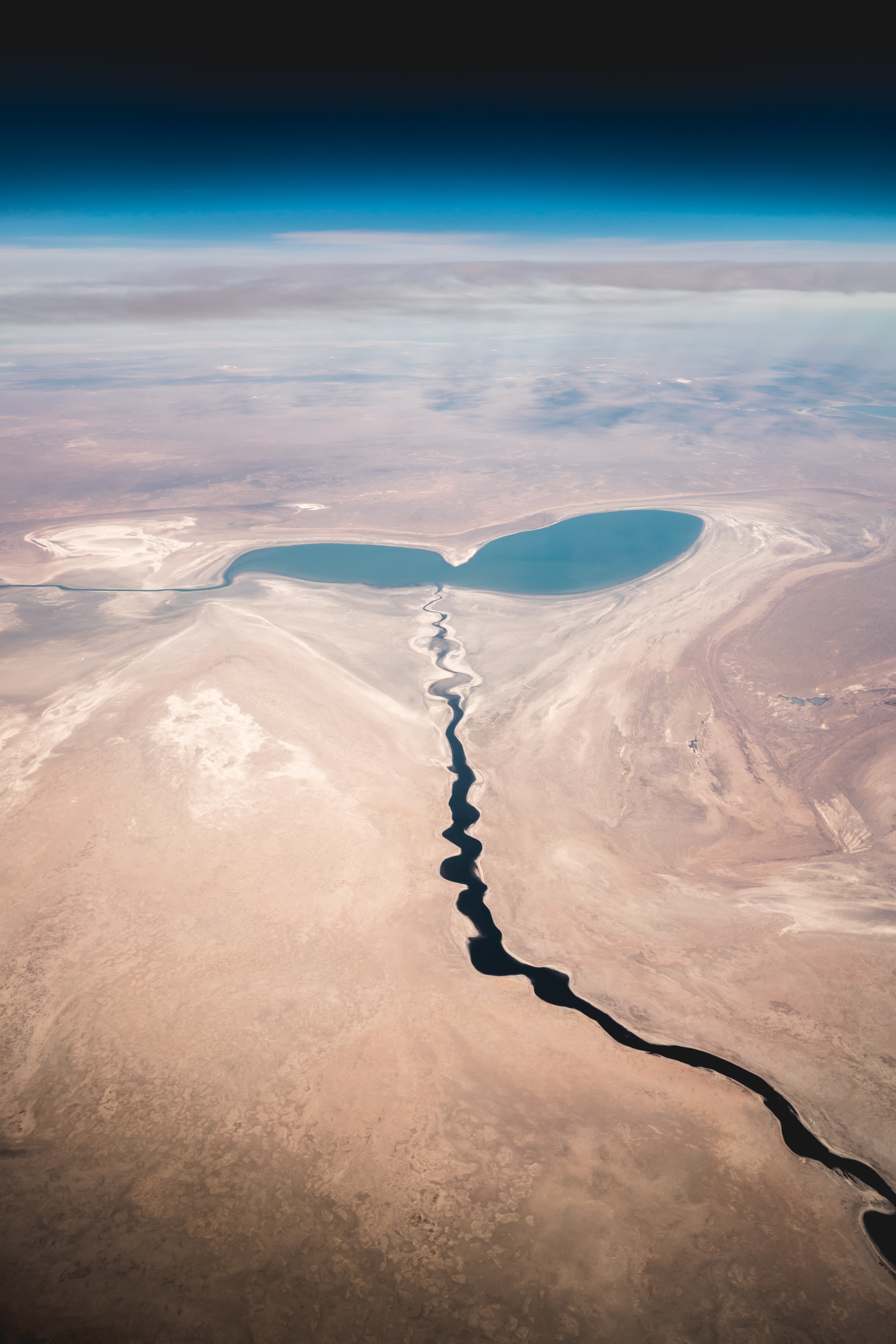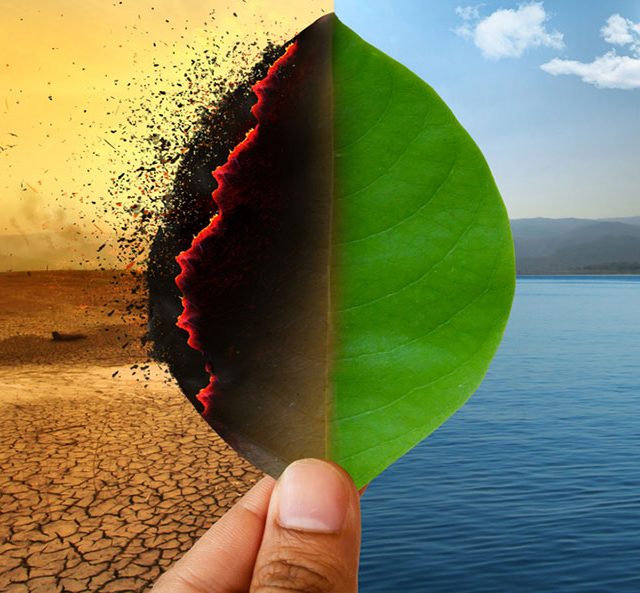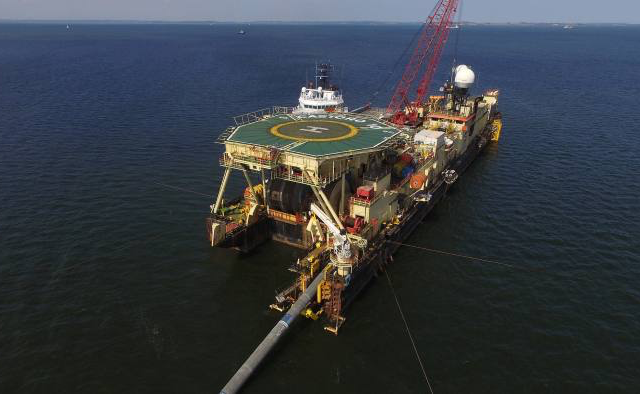Photo by Patrick Schneider on Unsplash
Experts warn of the possibility of a new environmental disaster in the Caspian Sea in recent years, similar to the drying up of the Aral Sea, writes Professor Dr. Abdulvahap Kara.
One of the important reasons for this is that the water in the Ural River is decreasing from year to year.
The Ural River reaches the Caspian Sea through the territory of the Russian Federation and Kazakhstan. Originating at the headwaters of Mount Nazhim in Bashkortostan, the river flows 2543 km through the Chelyabinsk, Orenburg and Atyrau regions of Kazakhstan.
The Ural River is the third largest river in Europe. Since the second half of the 1980s, experts have been warning about a decrease in the water level in the Urals. As of 2018, environmentalists often used the word “disaster” to describe the situation with the Ural River.
Alexander Chibilev, one of the world’s leading experts on the ecology of the Ural River, living in Orenburg, Russia, began studying the river in the 1980s and has published numerous scientific articles on the subject. According to him, the shallowing of the Urals was first observed in the 1970s.
This coincided with the beginning of the construction of hydroelectric power plants and, consequently, large reservoirs upstream.
To date, 19 dams and large reservoirs have been built in the Ural Basin. All of them are located on the territory of the Russian Federation, in the Orenburg and Chelyabinsk regions.
In total, the Ural River has 58 tributaries. The largest of these branches are Sakmara, Elek and Chagan. Since the construction of the Iriklinsky reservoir in the Upper Urals, 80% of the river water comes from Sakmara. In addition, in the 1970s, the activities of new agricultural and industrial enterprises intensified in the Ural Basin.
The cultivation and cultivation of vegetable, fruit and livestock farms, which had very high rates of development by Soviet standards, required the use of more and more water. In addition, it is a fact that the water of the river is negatively affected by the vicissitudes of the continental climate and global warming in the world as a whole.
The Caspian Sea, which is not connected with oceans and seas, is shrinking by 7 cm per year, and the shallow northern part currently has a depth of only 4-6 meters. For many years, this part of the sea once served as a source of livelihood for coastal people who hunted fish and caviar of the Caspian Sea. The area was a spawning ground for aquatic creatures such as belugas, sturgeons, Caspian seals and other fish, as well as migratory birds such as pink flamingos.
The shallowing of the waters of the Northern Caspian Sea carries with it the risk of the disappearance of this unique ecosystem, which already has endangered Caspian seals. The risk is already high due to pollution from oil extraction and wastewater discharge, overexploitation and poaching by local residents trying to make a living.
Dutch ecologist Frank Wesseling says: “Many important fishing areas around the Northern Caspian Sea may disappear,” and emphasizes that if no action is taken, the negative consequences will be huge, especially for people living in the region.
Scientists believe that if the necessary research is not carried out, by the end of this century the Caspian Sea may become more shallow by 9-18 metres and lose 25-30% of its area. A drop in sea level will have a devastating impact not only on the environment and the economy of neighboring countries, but also on the geopolitical situation, already tense due to the uncertainty of maritime borders, shipping lanes and fishing rights.
Ignoring the problem, of course, can lead to an environmental catastrophe, similar to what remains of the ghost ports and the dying Aral Sea.
Together, Russia and Kazakhstan are looking for ways to improve the catastrophic condition of the Ural River. The first Russian-Kazakh agreement on the joint use and protection of the country’s transboundary natural resources was signed in 1992. Later, an intergovernmental commission was established. Also in 2018, a meeting of the Russian-Kazakh Commission was held, where aspects of practical environmental work were discussed in detail.
In June 2019, at the International Environmental Forum, it was decided to create a bilateral intergovernmental body for the protection of the Urals. A detailed program for restoring the ecosystem of the Urals was developed, a specific action plan and roadmap were approved within the framework of this program, and a working group was formed.
Recent joint efforts of Russia and Kazakhstan show that the seriousness of the ecological crisis in the Ural basin is understood, but no concrete steps have been taken to solve the pressing problems so far.
In his speech at the VI Caspian Summit, held in Ashgabat, the capital of Turkmenistan, on June 29, 2022, President of Kazakhstan Kassym Jomart Tokayev called for participation in the preparation of a joint action plan to improve the situation on the Ural River.
In his speech, Tokayev said: “We are obliged to take joint and effective measures to save the Ural River, otherwise there will be nothing to save in the future. We call on all parties to join forces and draw up a joint action plan for the improvement of the Ural River,” he said.
As a result, urgent and coordinated actions are needed to make up for lost precious time, unless the Caspian Sea is destined to dry up to a large extent.
In this regard, it is important that Kazakhstan and Russia implement measures to save the Ural River, which provides significant water to the Caspian Sea, by ensuring mutually beneficial, scientifically based cooperation that takes into account not only their environmental, but also economic interests.
The Author, Professor Dr. Abdulvahap Kara published this original article in Turkish in the newspaper “Önce Vatan Gazetesi» and it is republished here in English with his permission.




